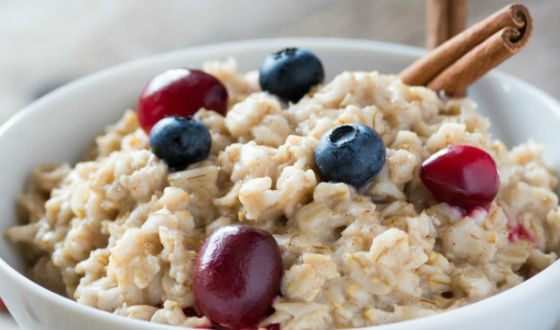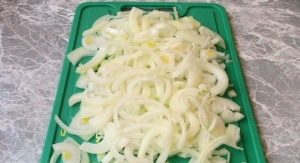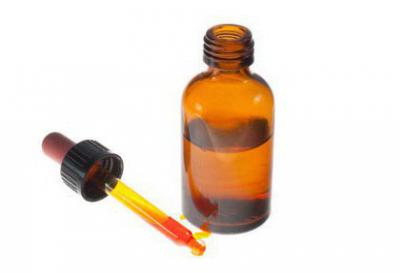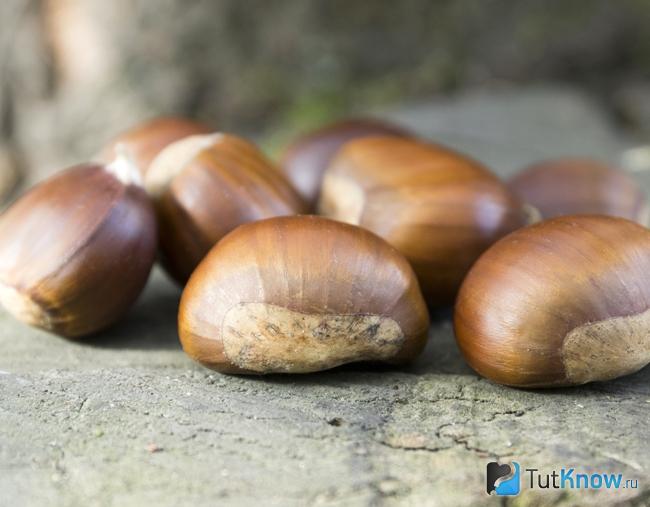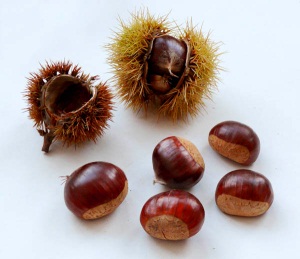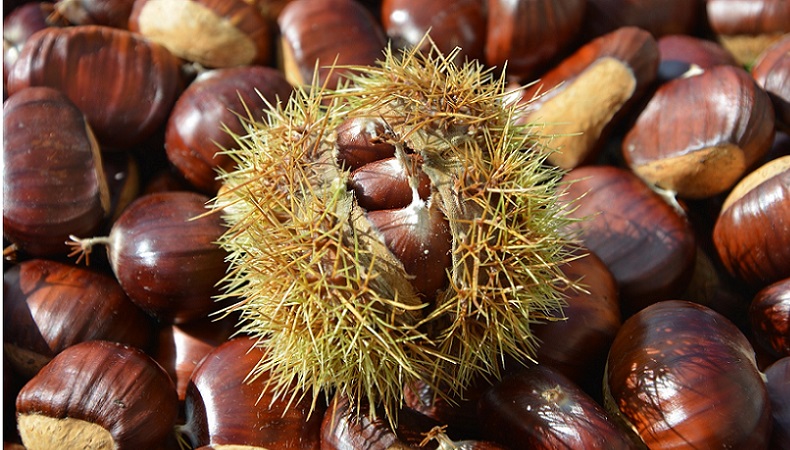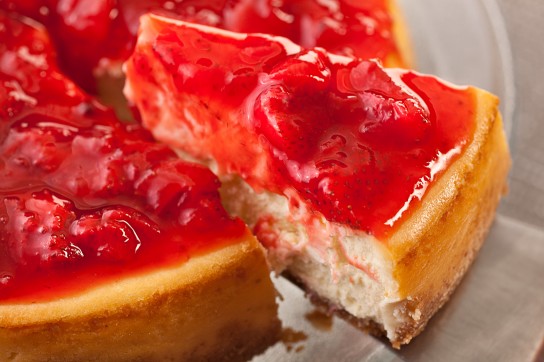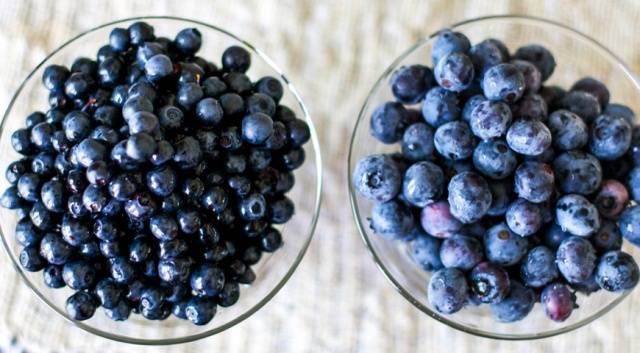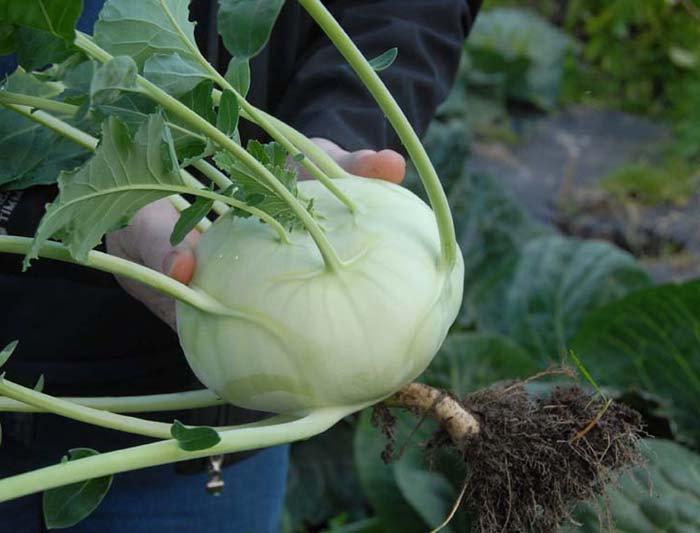Kohlrabi cabbage - useful properties and contraindications. Kohlrabi: useful properties
Vegetables are very useful for our body, they are an important component of proper nutrition. These products saturate our body with vitamins and minerals, in addition, they have a lot of fiber, which positively affects the functioning of the digestive tract. And besides everything else, if your menu is saturated with vegetables, you definitely will not get better, and the chances of losing extra pounds will increase significantly. Today we will talk about the useful qualities of such a common vegetable as kohlrabi - what are the benefits and harms of its consumption, which we list possible contraindications.
This vegetable is quite unusual, in essence it represents a root crop that rises above the ground like a ball. Usually a stalk of this culture, which has a delicate and juicy taste, is consumed in food. To taste, it resembles a stump of ordinary white cabbage, with the difference that it does not have bitterness.
The benefits of kohlrabi
The unique properties of kohlrabi are determined by its multifaceted chemical composition. Like other varieties of cabbage, this species contains a significant amount of vitamin C, for which he was even awarded the nickname of northern lemon. If we talk about the presence of calcium, then in kohlrabi it contains almost as much as in cottage cheese. Among other things, this vegetable is able to saturate our body with many minerals, including iron, selenium, sulfur, as well as magnesium, cobalt and phosphorus. In addition, it contains a significant amount of iron, iodine, molybdenum, fluorine and zinc. Kohlrabi is also a good source of vitamin A, vitamins PP and various B vitamins.
The useful qualities of this root crop are fully felt in the presence of various ailments of the digestive tract. Its systematic consumption in food can significantly reduce inflammatory processes on the mucous membranes of the stomach, as well as the intestines. In addition, sulfur-containing elements are present in it that effectively prevent the development of oncological lesions of the rectum and colon, and this property has been confirmed by scientific studies.
Kohlrabi cabbage is widely known for its cleansing qualities. It contains unique elements that prevent the accumulation of "bad" cholesterol on the surface of the vascular walls, which prevents atherosclerosis from developing. The consumption of such a vegetable will be flattering and heart, thanks to him, this body will function without interruption.
The systematic intake of kohlrabi cabbage will be useful for those people who are diagnosed with hypertension. This is due to the diuretic properties of this vegetable, due to which it effectively eliminates excess fluid from the body, optimizing blood pressure. This quality of this cabbage has a positive effect on the activity of the kidneys and liver, stimulating the processes of cleaning the body of various toxins and toxins.
In the cold season, kohlrabi cabbage will perfectly support and strengthen your immunity. Such properties are explained by the presence in it of selenium, as well as the famous ascorbic acid. In order to saturate our body with a daily dose of vitamin C, it is enough to eat only one hundred grams of this vegetable.
Kohlrabi is especially popular with nutritionists. It contains a minimum number of calories, but the weight loss properties of this vegetable do not end there. This cabbage contains a significant amount of tartronic acid, and it effectively prevents the conversion of carbohydrates into fat cells.
Accordingly, the systematic consumption of kohlrabi will help you find the desired harmony of the figure. Among other things, it contains a significant amount of fiber, which cleanses our digestive tract like a brush, sweeping away toxins, toxins and other food breakdown products from it.
What harm from kohlrabi?
Despite the high degree of usefulness of kohlrabi, its consumption can harm the body. So if you have an increased acidity of the stomach, this vegetable should be excluded from your daily diet. Otherwise, you can provoke another exacerbation of the disease.
In addition, such a product, like any other, can cause allergies. The presence of individual intolerance is also one of the contraindications to its consumption.
It is worth considering that those vegetables that grew in greenhouses and greenhouses can also harm our body. Kohlrabi easily accumulates various nitrates in itself, and they are able to accumulate in the body and provoke various ailments.
Use in traditional medicine
Kohlrabi, like the more common white cabbage, can be useful in the treatment of various diseases. Its systematic consumption in food can significantly reduce the manifestations of asthma and tuberculosis. For the treatment of these ailments, you can also apply decoctions based on a spherical stem or leaves of this vegetable.
Kohlrabi also has quite strong anti-inflammatory properties. You can use its juice to rinse with various ailments of the oral cavity, as well as for the treatment of inflammatory processes in the larynx.
So, kohlrabi deserves to take a seat on your table. The systematic consumption of this vegetable can bring noticeable benefits to your body.
Kohlrabi is a cabbage that you rarely find on domestic beds. Despite the taste similarity to the traditional white-headed variety, kohlrabi significantly surpasses it in medicinal and healing properties. The plant is also actively used in cooking. From the article you will learn how a ripe vegetable looks in the photo, what are its benefits and harms, what recipes will fully reveal the vitamin potential of kohlrabi.
Characteristic and composition
Kohlrabi looks like a turnip. The name of this vegetable literally translates as "cabbage turnip". For food, culture began to be grown in Europe in the 16th century.
Unlike turnips, the edible part of kohlrabi is not the root crop, but the stem. It has a juicy core. The taste is similar to ordinary white cabbage, but leaves no bitterness.
Kohlrabi was called the cabbage queen, because in this family she is the most wholesome and delicious. It is also called the “northern lemon” because of its rich content of vitamin C. However, in Russia the culture is not very popular yet. On the shelves of hypermarkets or vegetable shops, it is significantly inferior to white, Beijing, color and other varieties. But those who tasted the taste and appreciated the benefits of kohlrabi quickly become admirers of this cabbage.
Attention! In addition to vitamin C, kohlrabi also appreciates dietary qualities: the edible part of the plant contains about 41-42 kcal per 100 g. A relatively large amount of cabbage contains vitamins A, B2 and PP, calcium, magnesium and iron, vegetable proteins, sucrose, fiber, and mineral salt and sulfur.
Useful and unhealthy properties
Kohlrabi usually eat raw, peeling. In its fresh form, it is as healthy as possible. It is recommended even to children and pregnant women. Without it, it is difficult to imagine the diet of a person who cares about proper nutrition.

Kohlrabi cabbage is not very common in our country
The main positive properties of cabbage with its regular use in food:
- normalization of digestive processes, liver and gall bladder functions;
- removal of excess water from the body (with hypertension and diseases associated with the accumulation of fluid in organs and tissues);
- counteracting the appearance of cholesterol plaques on the walls of blood vessels;
- strengthening the heart muscle;
- decrease in high blood pressure;
- counteraction to atherosclerosis;
- general strengthening of immunity, the fight against viruses;
- removal of toxins and toxins from the body;
- suppression of excessive appetite, the fight against obesity.
Attention! Scientists confirm by experiments: kohlrabi is a remedy for intestinal cancer.
In folk medicine, they also use decoction from the stem and tops of the plant. It helps with diseases of the upper respiratory tract, including tuberculosis. Plant juice is used for:
- coughing;
- spleen disorders;

Cut kohlrabi cabbage
- kidney disease
- anemia
- vitamin deficiency;
- sore throat;
- cholecystitis and hepatitis;
- inflammation of the teeth and oral cavity.
Attention! Kohlrabi gruel is used as the main ingredient in anti-aging face masks. Plant juice cleanses the skin. It is used in homemade lotions, including frozen ones.
Allergic reactions or individual intolerance to kohlrabi is extremely rare. Among the prohibitions on eating this cabbage is only its effect on the acidity of the stomach. With an increased rate, eating a vegetable is not recommended. The use of kohlrabi for pancreatitis is also limited.
Kohlrabi in cooking
You can’t cook the stalk of this cabbage at all. Cut into slices or cubes, grate, add to the salad with any fresh vegetables and herbs - and you're done. Taste allows you to mix kohlrabi with both vegetables and fruits. For example, a salad with fresh kohlrabi, olive oil, nuts will become a vitamin storehouse on your table.
In addition, kohlrabi are fried in the form of fritters, baked. Vegetable stew and stuffed. Stew is made from this cabbage and sauces are prepared on its basis. The plant can be stored frozen, canned and dried.

Kohlrabi is especially useful fresh
Where to start cooking:
- Pick a good plant sample. The best tastes are stembled with a diameter of about 6 cm.
- Wash it and clean it from the ground.
- Cut off the leaves.
- Peel like a potato.
Tip. Culinary goals can adjust the state of the pulp of the fetus. For example, a harsh and fibrous structure indicates overriding. It is better to heat such a stembled before eating: stew or boil.
To cook kohlrabi, you need to cut the fruit into strips. Cabbage is boiled until soft, usually not more than 5 minutes, but for overgrown fruits time should be increased. Boiled kohlrabi is used in the preparation of the popular soup puree. To do this, wipe the two stalks through a sieve. Then mix with a couple of glasses of water in which the cabbage was boiled, and boil for a couple of minutes over low heat. Mix and whisk the yolk, half a glass of cream and 40 g of butter, then add all this mass to kohlrabi. The soup is seasoned with boiled mushrooms, and served with croutons.
Chops are prepared from fried kohlrabi. To do this, cut the fresh fruit into plates with a thickness of about 1.5 cm. First, boil in salted water. Then grate with spices, dip in flour and in a mixed egg. Fry the semi-finished products in oil. Sour cream and garlic sauce goes well with such a dish.
Kohlrabi is excellent as a nutrient for patients in the postoperative period. Also, a useful plant will well support the body at the time of nervous and physical exhaustion.
Kohlrabi cabbage - a variety of white cabbage. The name is formed from two German words kohl and rube, which respectively means "cabbage" and "turnip". But the Italians call it that - cabbage turnip. Recently, the cabbage has a lot of fans and this is no coincidence. It is rich in kohlrabi with vitamins, macro- and microelements, it is actively used in recipes of traditional and traditional medicine.
Kohlrabi cabbage: description
- Kohlrabi is a stalkbled from the Cabbage family.
- It has an oval or rounded shape resembling a turnip.
- The average size of the fruit in diameter is 13 cm.
- The color of cabbage is green, in the presence of anthocyanin in its composition, it can have red, blue and purple colors.
- The pulp tastes sweet and tender, very juicy, has a white color.
- It tastes like a stalk of white cabbage, but is devoid of its bitterness and pungency due to the high content of fructose and glucose.
- Differs in a high content of nutrients and unpretentiousness in relation to cultivation.
The photo shows how kohlrabi looks in section:

A feature of kohlrabi cabbage is a high content of nutrients in a complex with low calorie content and a pleasant taste.
Important positive characteristics of the fetus:
- low cholesterol;
- does not contain trans fats;
- low percentage of saturated fats;
- low percentage of sodium;
- low percentage of sugar.
What does kohlrabi give with regular use:
- Strengthening immunity.
- Activation of metabolism.
- Recovery of the nervous system.
- Saturation of the body with a wide range of vitamins.
- Anti-inflammatory effect.
- The removal of toxins.
- Decreased puffiness.
- Prevention of atherosclerosis.
- Improving blood composition.
- Rehabilitation after infectious diseases.
- Conclusion of excess fluid.
- Prevention of accumulation of cholesterol deposits.
- Strengthening teeth and gums.
- Treatment of tuberculosis, bronchitis, diseases of the gastrointestinal tract, stomach, liver, kidneys, spleen, obesity.
Kohlrabi composition
Kohlrabi cabbage contains 8-13% of dry matter. Energy value - 180-210 kJ or 45 kcal per 100 g of cabbage.
Nutritional value per 100 g:
| Substance name | How much is contained |
| Water | 85 g |
| Squirrels | 3 g |
| Fats | 0.1 g |
| Carbohydrates | 7-10.5 g |
| Cellulose | 1.6 g |
| Pectins | 0.7 g |
| Organic acids | 0.1 g |
| Ash | 1.3 g |
Vitamins:
| A (beta carotene) | 0.1 mg |
| B1 (thiamine) | 0.1 mg |
| B2 (riboflavin) | 0.06 mg |
| B3 or Vitamin PP (Niacin) | 1 mg |
| B9 (Folic Acid) | 31 mcg |
| B6 (pyridoxine) | 0.15 mg |
| C (ascorbic acid) | 50-60 mg |
| E (tocopherol) | 23 mg |
| U (S-methylmethionine) | 12.9 mg |
| K (phylloquinone) | 0.1 mg |
Macronutrients:
Trace elements:
| Iron (Fe) | 1-2 mg |
| Iodine (I) | 3.5 mcg |
| Cobalt (Co) | 3.5 mcg |
| Manganese (Mn) | 0.2 mg |
| Copper (Cu) | 75 mcg |
| Molybdenum (Mo) | 11 mcg |
| Fluorine (F) | 11 mcg |
| Zinc (Zn) | 0.5 mg |
Amino acids (indispensable for the structural development of tissues):
| Tryptophan | 4% |
| Lysine | 3% |
| Phenylalanine | 2% |
| Histidine | 3% |
| Threonine | 5% |
| Leucine | 2% |
| Methionine | 1% |
| Valine | 3% |
| Isoleucine | 6% |
Glycemic index (GI) - the rate of absorption of carbohydrates by the body and an increase in blood sugar. Kohlrabi GI - 15 (low). This means that kohlrabi cabbage has “the right carbohydrates”, which slowly transfer their energy to the body.
Useful properties of kohlrabi

How to grow more crops?
Any gardener and summer resident is pleased to receive a large crop with large fruits. Unfortunately, it is far from always possible to obtain the desired result.
Often plants lack nutrition and healthy minerals
It has the following properties:
- Allows increase yield by 50% in just a few weeks of use.
- Can get good harvest even on low soils and in adverse climatic conditions
- Absolutely safe
Contraindications
Does kohlrabi only benefit or is there harm from eating? When comparing the positive and negative properties of cabbage, it is worth noting that it is almost perfect. There are no definitive contraindications for her.
However, kohlrabi should refrain from eating in several cases:
- Individual intolerance individual components of the vegetable for allergy sufferers.
- High acidity gastric juice. Vegetable is able to reduce the pH of the medium, it is recommended for low acidity.
- Acute pancreatitis. With this disease, the doctor prescribes a strict diet, in which it is forbidden to eat any vegetables and fruits in their raw form, and sometimes they completely exclude cabbage. It can provoke an increase in painful cramps in the patient and bloating.
When using this type of cabbage, excessive gas formation does not occur, especially when combining it with rice or beets.
To use a vegetable or its juice at night is inappropriate because of its diuretic properties. Constant excessive pressure will negatively affect the bladder. With regular practice of long abstinence from urination, there is a risk of developing diseases of the genitourinary system.
Kohlrabi for various diseases
Cough and respiratory illness
Heart disease prevention
Prescriptions for medicines from cabbage:
- Fresh grated kohlrabi salad and fresh green apple is consumed for 2 weeks 3-4 times a year. Prevention of diseases such as atherosclerosis and hypertension.
- Fresh kohlrabi juice drink 3-4 times a day before meals, 50 ml. For taste, you can add honey, sugar, syrups from various fruits and berries. The course is a month, twice a year. Prevention of ischemia.
Diabetes
The use of kohlrabi cabbage improves the structure of nerve cells, reducing the risk of developing diabetic neuropathy. It normalizes body weight, which diabetics may be overweight due to low calorie content and “proper carbohydrates”. It contains a small amount of glucose and fructose, does not give the effect of a sharp increase in blood sugar.
.Pyelonephritis
Diuretic property of cabbage removes malignant bacteria from the bodyBy cleaning and disinfecting it, namely the kidneys and the genitourinary system, it contributes to recovery. Contains Potassium, which is necessary for patients with pyelonephritis.
Pancreatitis and Cholecystitis
To improve digestion and stool prophylaxis, various dishes containing kohlrabi:
- casserole;
- fresh vegetable salad, if diet allows.
The optimal amount of cabbage per day is 100 g. Use fresh cabbage juice before meals 25-50 ml 3-4 times a day, along with 1 tsp. honey. Helps relieve exacerbation with cholecystitis.
Gout
The disease is caused by metabolic disorders, affects the condition of bones and joints. Kohlrabi eliminates the cause of the disease due to fiber and the presence of various chemical compounds, improves metabolism, assimilation of beneficial elements, eliminates flatulence. Having more calcium than citrus makes bones and joints strong.
100 g of vegetable contains 70% of the norm of vitamin C per day, necessary for patients with gout.
Bronchial asthma
Prescription drug from cabbage:
- 60 g of clean washed vegetable tops are poured with clean boiled water (400 ml);
- bring to a boil and leave to cook for another 20 minutes;
- then filter, the broth should be transparent.
Store in the refrigerator for no more than three days. A decoction of tops of kohlrabi is consumed 100 ml twice a day.
 Stories of our readers!
Stories of our readers!
“I’m a summer resident with many years of experience, and I started to use this fertilizer only last year. I tested it on the most capricious vegetable of my garden - on tomatoes. The bushes grew and bloomed together, they gave the crop more than usual. And they didn’t get late blight, this is the main thing.
Fertilizer really gives a more intensive growth of garden plants, and they bear fruit much better. Now you can’t grow a normal crop without fertilizer, and this top dressing increases the number of vegetables, so I’m very pleased with the result. "
Kohlrabi cabbage for weight loss
 One of the main advantages of using kohlrabi for weight loss is a beneficial effect on the nervous system.
One of the main advantages of using kohlrabi for weight loss is a beneficial effect on the nervous system.
Strict diets, a limitation in the number of grams and the rejection of your favorite harmful foods adversely affect your mood and emotional balance. This cabbage will help to calm down and normalize the work of nerves, while it has a pleasant delicate taste.
Kohlrabi is a dietary product containing only 42-46 kcal per 100 g. Replacing high-calorie foods with this vegetable will help prevent a further set of extra pounds. It contains a minimal amount of carbohydrates. At the same time, the fetus has a “magic” organic acid in its composition, which prevents the conversion of carbohydrates used with other products into fat.
The presence of fiber gives the effect of satiety, suppressing the desire to eat large portions. It also removes toxins from the body, cleans bacteria and lowers blood sugar.
Arginine in cabbage improves metabolism and helps get rid of excess fat deposits. Isoleucine will increase physical performance, thereby making it possible to perform more exercises that contribute to weight loss.
When dieting, you should refrain from high-calorie foods, which means that cabbage should be consumed fresh, boiled, baked or cooked in a slow cooker. It is better to season salads not with mayonnaise, but with healthy oils (for example, from flax seeds) or yogurt-based sauces.
The use of kohlrabi during pregnancy
Useful properties of kohlrabi during pregnancy:

The negative effect is an increased diuretic effect, which is already present in excess in pregnant women.
Mothers who are breastfeeding should temporarily refuse to take cabbage. Useful fiber for the mother has a bad effect on the intestines of the baby. The baby may have colic, anxiety and bloating.
Children up to a year are very sensitive to all food products, an allergic reaction may occur.
Starting from 3 months, when the baby’s body gets stronger, Kohlrabi can be returned to the mother’s diet. You should carefully monitor the reaction of the child, so as not to harm his health.
As a bait for the baby, it is better to give cabbage in cooked form - boiled or baked. Finely chopped vegetable is allowed to be consumed by a child with six months in small portions. When growing vegetables, the use of chemicals is not allowed, do not use cabbage, which was damaged by diseases.
Vitamin puree from kohlrabi for baby food
The composition of the vitamin puree includes: stembled kohlrabi (half a head of cabbage), potatoes (75 g), spinach leaves (110 g), high-quality butter (1 tbsp.), Chicken yolk (1).
Cooking method:

Serve warm, keep in the refrigerator for up to 2 days. The child is given freshly prepared from the age of 6-8 months.
All puree ingredients must be fresh, undamaged, ripe, of high quality and free of chemicals.
Methods for making kohlrabi cabbage
How to eat kohlrabi cabbage? Kohlrabi is prepared at home in many ways. They use it fried, stewed, baked in the oven and make a preparation for the winter. And also in the stuffed form with mushrooms, make salads, adding, and apples.
More on cooking methods:
- Boiled. Complex compounds turn into simpler ones and are more easily absorbed by the body. Part of the vitamins disappears. The vegetable becomes softer and better chopped, easier to go through the digestive chain. Loses the largest amount of antioxidants.
- Braised. The addition of low calorie content. Beneficial substances from the broth are returned to the product. If put out, the vegetable becomes soft and juicy.
- Fried. Saturated with fat and calories. Prepares fast. Trans fats and carcinogens are formed.
- Baked. It retains more beneficial compounds, quickly cooks due to high temperatures. When added mayonnaise or fat gets harmful properties. Gets a delicate taste due to caramelization of sugar.
- Raw. It contains the most vitamins, which disappear during cooking. However, for a child’s fragile organism, the presence of fiber and pectin negatively affects the functioning of the pancreas.
- Steamed and in a slow cooker. Does not lose nutritional value, shape, color and structure. Keeps low-calorie content. Juicy foods, do not overdry. Pre-marinating gives additional aromas and spices. It does not require control over cooking.
The leaves of kohlrabi are edible and have more vitamins than the fruit. They are used in soups, stews, boiled and stewed, used in the preparation of side dishes, vegetable cutlets and fritters.
How to clean? Before cooking, the vegetable is peeled. Remove the top layer to white flesh over the entire area of \u200b\u200bthe fetus. It is peeled like a pineapple: the upper and lower parts of the fruit are cut, after which, with a sharp knife and smooth movements, they cut off the arched slices of the peel.
When storing the whole product, along with leaves and roots, a longer shelf life can be achieved.
What to cook from kohlrabi?
A healthy kohlrabi cabbage with its delicate taste is a vegetable suitable for all types of cooking. You can get the most diverse culinary masterpieces to taste, combining it with other products.
Kohlrabi is simply included in the daily diet of everyone, if you put it in borscht, cabbage soup, mashed potatoes, meatballs, pancakes and salads. Below are step-by-step recipes for preparing hot and cold dishes.
Video recipe: kohlrabi korean salad
Kohlrabi coleslaw
Ingredients:
- kohlrabi - 1 head of cabbage;
- - 1 PC;
- apple - 1 pc.
Refueling:
- sour cream;
- salt to taste.
Cooking method:
- Washed, peeled vegetables are ground on a medium grater.
- A pure apple is ground on a large grater.
- All mix, season with sour cream and salt.

Delicate kohlrabi cabbage soup
Ingredients:

How to prepare kohlrabi cabbage for the winter?
- Freezing. Kohlrabi is stored frozen without any problems and does not lose its beneficial properties. Washed and peeled cabbage is ground on a grater. Any container for storage in the freezer is suitable.
- Juice. Kohlrabi is cleaned, washed and passed through a juicer. The juice is boiled and closed in sterile glass jars. Store in a cool dark place for up to 3 years.
- Pickled Kohlrabi. Cabbage (1 kg) is peeled and cut. Heated with 2 liters of water and 2 tbsp. l salt. Blonch for 2 minutes, drain the water, dry the vegetable. In sterile jars, put, at will, leaves of cherry and currant, several cloves of garlic, onion rings and kohlrabi to the top. Pour marinade (water with salt, pepper, bay leaf, boil sugar, add vinegar). Roll up.
How to choose and store kohlrabi cabbage?
When choosing the fruit should be intact, without damage, rot, stains and deposits. The size is best to choose about 10-12 cm in diameter. Leaves are fresh and green. Sluggish and withered leaves indicate an overripe fruit.
It is stored in the winter in the frozen or canned look. Fresh unwashed vegetables can be stored for about 2 months at an air temperature of 0 degrees and a humidity of 95%. Folded down, the leaves are not completely cut off, leave the petioles. To preserve, cover with wet sand or lay a damp towel on top.
The average price in Russia is about 200 rubles per 1 kg.
Video: Kohlrabi description and how to determine ripeness:
Conclusion
Tasty and incredibly healthy kohlrabi will easily fit into your diet. Feel free to eat kohlrabi cabbage for food, make it pleasant for your own body!
In Europe, kohlrabi is called cabbage turnip. According to the classification, it belongs to the type of white cabbage, and with turnips they have in common only the outward similarity and sweet taste. According to the assumptions of historians, kohlrabi, recipes of dishes from which were found by the ancient Romans, began to penetrate into Germany and Sweden in the middle of the 16th century. After 100 years, it becomes so popular that it gets the name of the vitamin bomb due to its high content of vitamin C.
Culture features
Stebleplod (agree, a beautiful word?) Kohlrabi is tender and very juicy. In principle, this is the stump that children love to gnaw so much. The center of white cabbage contains a lot of nitrates. Kohlrabi do not have them, and instead of them there is a mass of nutrients and healing substances.
The advantages of the vegetable include its gardening qualities, namely: resistance to pests and many diseases. In northern latitudes, kohlrabi not only grows, but also ripens. She began to grow more in Russia. Thanks to this, cabbage turnips began to get into our diet more often.
Composition and biological value of kohlrabi
We already know about. Together with it, garden lemon has a large supply of vitamins A, PP, as well as B and B2. Kohlrabi, whose beneficial properties are not limited to this, contains carbohydrates and proteins. There are a lot of enzymes in it.
By the content of minerals and metals of the alkaline group (K, Ca, Mg), as well as iron and cobalt, cabbage turnips occupy a prominent place in the row of vegetables. And thanks to the glucose contained in, it quickly quenches the appetite. Kohlrabi is a low-calorie plant. 100 grams contains only 42 kcal. These qualities of kohlrabi became the cause of love for her from healers, culinary specialists and nutritionists.
Useful properties of kohlrabi and cases of contraindications
A rich set of biologically active elements in the tissue of cabbage positively affects the state of health. Its use in food maintains the tone and stabilizes the physiological processes of many organs in the event of imbalance in their work.
Genitourinary System
Due to the mild diuretic effect of kohlrabi, excess fluid is eliminated from the body. As a result, swelling and the amount of salts leading to the development of urolithiasis are reduced.
Gastrointestinal tract
Cabbage juice raises your appetite. However, it prevents the occurrence of inflammatory processes in the spleen and epithelium of the digestive system. It is able to treat stomach and duodenal ulcers and normalize the work of the liver and gall bladder.
The immune system

The cardiovascular system
Nervous system
Cabbage turnip has a calming effect. And how does an antidepressant reduce nervousness, cheer up, balance emotions.
Leather
Extracts from this subspecies of white cabbage are present in cosmetic creams. Vitamins K and E contained in kohlrabi regenerate the epithelium, increase the tone of aging skin, refresh and rejuvenate it as a whole. Raw masks have a more effective effect.
Oral cavity
Kohlrabi juice sanitizes the tongue and gums, reduces the risk of gingivitis and stomatitis. Cabbage not only fights against caries, but also successfully resists many microbes that provoke inflammatory processes in the mouth.
We cannot ignore the fact that kohlrabi has an anti-cancer property. Selenium contained in its tissues prevents the development of oncology of the colon, as well as the mammary gland and the genitourinary system.
The low calorie kohlrabi made her a favorite product of nutritionists. Fiber helps to quickly lose extra pounds and cleanse the intestines from poisons and toxins. And as a result of the action of tartronic acid, the transition of carbohydrates to fat formations is disrupted.
Contraindications
Determining useful properties and contraindications in kohlrabi, we note that the positive effect of eating this vegetable is much greater than the negative sides. There are no special gastronomic prohibitions. But due to the ability to swell the stomach and increase the acidity of its environment, kohlrabi is not recommended in the following cases:
- with gastritis with acidity of the stomach above normal;
- during pregnancy and lactation of babies;
- during the course of acute pancreatitis;
- with a poor individual reaction to the product.
Cooking Kohlrabi
To get maximum health benefits from kohlrabi, it is best to eat it raw. The young cabbage tops have a spicy taste. It is added to salads to other vegetables. But usually they use stembled. It is passed through a grater and flavored with vegetable oil. In this form, kohlrabi has a juicy and sweet taste of turnips, but much more tender.
When cooking cabbage dishes using the hot processing method, it is recommended to chop it into small cubes, which can then be used in frying, stewing, baking and boiling. It often comes in a variety of vegetable stews, soups and salads. Especially good from kohlrabi dishes stuffed with meat and vegetables. The middle of the fetus is removed and the chopped filling is put there.
To enhance the taste of raw kohlrabi, soy or cheese sauce is added to fresh salads (by the way, you can read the article about). Many seafood, poultry, peanuts and legumes have an excellent combination with cabbage turnips.
To preserve useful properties of kohlrabi, first of all, do not expose it to too long processing. As you know, at high temperatures, many vitamins, in particular, ascorbic acid, are destroyed. This circumstance should be especially taken into account when preparing vitamin and diet dishes for vegetarians, children and patients. All other categories of eaters, if they agree with this situation, are still more interested in the gastronomic component of dishes.
Several popular recipes
There are a lot of recipes with kohlrabi. They are mentioned in various culinary guides. Here are some of the most successful and uncomplicated examples.
1. Korean Kohlrabi Salad
Perhaps this recipe is the easiest. It simultaneously combines benefits and taste. It can be prepared by anyone who is able to hold a knife and a grater in their hands (this is a recipe for us men). To do this, he needs to wash and peel one large, two medium-sized cucumbers and kohlrabi weighing 200 g.
Carrots and cabbage are rubbed on a fine grater, and cucumbers are cut into strips with a knife. Then finely crumble and. The ingredients are combined, salted, pepper, seasoned with sunflower oil. You can add a little sourness to the salad with a couple drops of lemon juice.
2. Soup puree
This soup is quite original and is prepared as follows:
- peeling potatoes - 3 pcs., a medium-sized onion head and one head of kohlrabi;
- all vegetables are cut into pieces randomly and fried in vegetable oil;
- roasting is transferred to the pan, a liter of water is poured and stewed for 10 minutes;
- then salt and pepper;
- all ingredients are passed through a blender or sieve and allowed to cool;
- the finished soup is boiled again and whipped cream is added.
Puree soup is poured, greens and fried hunting sausages are poured into each plate.
3. Braised Kohlrabi
It is necessary to remove the top layer from five heads of kohlrabi. Then cut into cubes, slightly salt, fry in flour in butter. Transfer slices into a pan and sprinkle a little with pepper. After this, you need to mix a third glass of sour cream with tomato juice (2-3 tablespoons) and pour the mixture into the pan. Stew kohlrabi should be no more than 35 minutes until soft. The finished dish is sprinkled with chopped parsley or dill and served at the table.
Kohlrabi itself and recipes for dishes from it have not yet taken root in agriculture and the diet of our compatriots. But I want to hope that her many virtues will one day certainly lead her to the leaders of universal adoration.
Not so long ago, on the shelves of our stores, or rather hypermarkets of foreign trading networks, a vegetable appeared that looked like turnip. Is it such an exotic? This will be the topic of our article. The homeland of kohlrabi is the warm Mediterranean, but in the northern countries of Western Europe it appeared due to the cultural influence of Ancient Rome. The Germans brought this vegetable to us. The very name "kohlrabi" of German origin. Literally translated as "cabbage turnip". Outwardly similar, but the similarity is limited. Delicate in taste, this cabbage is devoid of the bitterness of its white sister. It is considered a delicious and dietary product, because it has only 45 calories. Gourmets call this vegetable the queen among all cabbages. Let us pamper ourselves with this delicacy and cook some kohlrabi.
The benefits of cabbage turnip
What is this vegetable good for? In addition to low calories, kohlrabi boasts that it contains a mass of unique substances. It has fructose in it - hence this gentle, sweetish aftertaste. It also contains valuable minerals - boron, cobalt, iodine, copper, zinc, as well as organic acids and dietary fiber. Sulfur, which is part of this cabbage, prevents the development of colon cancer. It’s hard to overestimate the vitamin content of kohlrabi: there is all of group B useful for memory, hair and nails, sharpening eyesight A, as well as PP, K and E. During periods of generalized flu, be sure to include kohlrabi in your diet - this cabbage has more vitamin C, than in citrus fruits. And, unlike the white one, it does not cause bloating and flatulence. There is only one contraindication to the frequent use of kohlrabi - these are stomach diseases associated with high acidity. But in this case, it all depends on how to cook kohlrabi.

Preliminary manipulations
What nothing is made of this vegetable! Soups, a variety of side dishes for fish and meat, vegetable stews, gourmet salads, casseroles. But before you think what to cook from kohlrabi, you need to pre-process this vegetable. On the outside you can’t tell exactly where it is better to use it - in soups, on salad or stew. Of course, those who care about healthy nutrition can eat it raw. But from the heat treatment its useful qualities do not disappear anywhere - and this is another plus of kohlrabi, the queen among cabbage. It can be eaten boiled, pickled, baked, fried, stewed. But no matter what we cook from it, first you need to rinse it, cut the leaves, and then peel like potatoes. Now feel the flesh. If it is fibrous, too stiff, then we are dealing with an overripe fruit that is suitable for soup or stew. And if the pulp crunches nicely, has a fresh cabbage smell, you can safely use it for salads.

Mushroom kohlrabi soup with mushrooms
For the first dishes, this cabbage is boiled or stewed. The time of heat treatment largely depends on the "age" of the vegetable. Nutritionists recommend boiling cabbage for no more than five minutes, but kohlrabi dishes will not be so tasty if they bite the teeth in cabbage. A quarter of an hour is enough time to cook the whole vegetable. If you decide to extinguish kohlrabi, you must first cut it into strips and grind under a lid with a small amount of water. So, in this recipe, we recommend chopping two peeled cabbage into large pieces and boil them until cooked. Then remove the kohlrabi from the broth and wipe through a sieve. In mashed potatoes, add three and a half cups of broth, salt and boil for 3-5 minutes over low heat. In a separate bowl, release the egg yolk, whisk it with half a glass of cream. Pour this mixture into a hot but not boiling soup. Cut the boiled mushrooms into pieces in a plate. Pour in soup, sprinkle with croutons.

Chops
If you are a convinced vegetarian, you can not puzzle over what to cook from kohlrabi. Here is a recipe for delicious vegetable chops. Prepared cabbage cut into plates about a centimeter thick. Boil water in a saucepan, salt it in moderation, drop a leaf of laurel. Gently lower the kohlrabi washers. Boil it for about five minutes, and then gently catch it with a slotted spoon as well. Let them cool slightly and drain on a sieve. In one bowl, beat the egg with a fork, and in the second mix half a glass of flour, a pinch of salt, black pepper, suneli hops, and other seasonings to taste. In a pan, bake vegetable oil. Roll each piece of kohlrabi breaded, and then dip in the egg. Spread in a skillet and fry, like chops, until golden brown. This dish is best served with sour cream and garlic sauce or mayonnaise.

Cabbage and meat pie
How to cook kohlrabi if the vegetable is too old? A wonderful casserole or cake will come out of it. Cut four potatoes and 600 g kohlrabi into cubes and dip in boiling salted water. Boil until tender. Drain the broth, and puree the vegetables in a blender (or crush). Add the egg, three tablespoons of couscous (you can replace the usual semolina). Leave for a quarter hour until swelling. Pour a glass of flour, knead the dough. Put it in the refrigerator for half an hour. Then roll out the dough and add another half a glass of flour. Grease a baking dish with butter, sprinkle with semolina or couscous. Lay out the dough, filling out the sides. In a pound of ground meat, add chopped onion and herbs. Blind small meatballs, roll them in flour, fry in vegetable oil. Cut one bell pepper into strips, add a little chopped onion, peeled tomato, 2 tablespoons of tomato paste, salt and pepper. Pour in a quarter cup of cream, pour a spoonful of couscous and simmer for about five minutes. Shake the egg in a bowl with a fork. Dilute it with an incomplete glass of cream. Put the meatballs in the cake pan. Place the stewed vegetables on top and cover with egg and milk sauce. Place the baking sheet in an oven preheated to 200 ° C and bake for 40 minutes. Then sprinkle with hard cheese and continue to cook the pie until golden brown.
Salad with apples and nuts
Here is the answer to the question of what to cook from kohlrabi, for fans of a healthy diet. Cabbage here does not need to be subjected to heat treatment, which means that you can be sure that all its useful qualities are preserved. Kohlrabi (300 grams) peel and chop on a grater for Korean carrots. Peel a large apple from the fruit box and peel, cut into strips, sprinkle with lemon juice so as not to turn black. A handful of nuts crush in a mortar is not very finely. Cut one hundred grams of cheese into small cubes. You can add a handful of washed raisins. Mix all the ingredients, pour the salad with 3-4 tablespoons of olive oil, salt, season with black pepper. Serve garnished with mint leaves.

Holiday salad
Here are recipes for how to cook raw kohlrabi. A salad with chicken and pineapple can replace a light lunch or be a good snack for a festive table. We clean two tubers of cabbage turnip, chop on a grater. 250 g of boiled chicken fillet cut into pieces. We grind three hundred grams of pineapple rings into segments. We mix everything in a beautiful salad bowl. In a separate bowl, add a pinch of hot red pepper to seven tablespoons of mayonnaise. Spread it neatly over the salad. Garnish with lingonberries and chopped fresh herbs of dill and parsley. You can also rub cheese and boiled egg on top. We remind you that for salads it is best to use young, juicy cabbage. Moreover, such a vegetable can be eaten with not only a turnip, but also tender green tops. Chop the leaves along with the rest of the greens.

Summer Midday Soup
Consider how to cook kohlrabi if the cabbage is young. In the summer it is not difficult to buy this greenish vegetable. We take two small kohlrabi tubers. We clean turnips, we keep leaves. Two apples are freed from the peel, cut into cubes, like kohlrabi. Dissolve 3 tablespoons of butter in a saucepan, simmer fruits and vegetables for 5-6 minutes. Fill with any broth (800 ml). Bring to a boil, add 400 ml of cream. As soon as it starts to gurgle again, remove from heat and puree with a blender. Finely chop the leaves of kohlrabi and parsley, mix with 250 g of cottage cheese and half a glass of sour cream. We season this mass of soup. Correct the salinity and severity of the taste. Sprinkle the prepared soup with crushed nuts and nutmeg. Can be served with donuts or buns grated with garlic.
All of the above dishes (except salads) can be prepared with the help of a kitchen unit. To make it clear which mode to apply and what time to set, here is another way. We clean two kohlrabi tubers, cut into cubes, and the onion randomly. In a multicooker bowl, melt a spoonful of butter, mix it with the same amount of vegetable, fry the onion. Add kohlrabi. We use all the same "Frying" mode with the multicooker lid open. Salt, pepper, pour a mixture of equal amounts of broth and sour cream (about half a glass of each ingredient). Close the lid, set the "Extinguishing" mode for half an hour or forty minutes. We put half of the boiled egg in the plates, fill it with ready-made soup, decorate with greens.
Kohlrabi blanks for winter
For long-term storage, purple stalks are used. Cabbage is placed in a basket, sprinkled with moistened sand and lowered into the cellar. In the vegetable compartment of the refrigerator, cabbage does not lose its valuable taste for about a month. You can freeze it in the freezer, but for this, turnip is cleaned, cut into small pieces and placed in a plastic bag.
You can stock up on winter and dried kohlrabi. Billets - peeled thin slices - blanched for five minutes in water with lemon juice. Then it is cooled under a stream of ice water and dried on a towel. Then they are laid out on a baking sheet so that the pieces do not touch each other, and put in the oven at 65 ° C. There, kohlrabi is dried to the desired consistency.
At home, you can salt this queen of all cabbage, ferment, make spin salads. Kohlrabi marinated is very easy to prepare. We take young stems, clean them, cut into slices. Bring the water to a boil, acidify a little with vinegar. Dip the kohlrabi slices there and cook them for five minutes. We recline in a colander and cool, after which we put it in prepared jars. We do the marinade as follows: boil a liter of water with 50 g of salt and 80 g of sugar. Cool, add 5% vinegar (100 grams). In jars we put an umbrella of dill, a clove of garlic, a leaf of basil and marjoram. Pour marinade to the top, cork.



